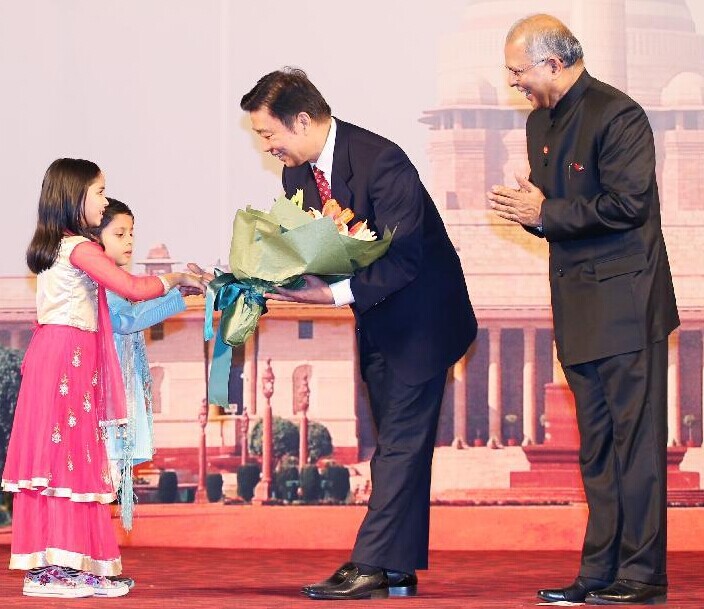China-India interactive study boosts culture development

xinhua
Two Indian children presenting a bouquet to Chinese Vice President Li Yuanchao as a gift in the launch ceremony for the “Year of China-India Friendly Exchanges” held in the Embassy of India, Beijing
2014 is known as the “Year of China-India Friendly Exchanges”. Recently, the Minister of Foreign Affairs of China Wang Yi visited India, signaling the latest stage of warming relations and academic communication between the two Asian countries.
As two major powers and ancient civilizations, India and China share a long-standing friendship. Starting as early as the 19th century, Sinology in India was mainly limited to the fields of religion and culture. In the early 20th century, prominent scholars like Tan Yunshan and Rabindranath Tagore established institutes of Sinology in the South Asian country.
The Director of the Institute of China-India Comparative Study Jia Xiangtao introduced the framework of research of Sinology in contemporary India. After the establishment of New China, India and China initiated a new period of mutual study.
The border clash that broke out later between the two countries, however, did not diminish the importance of Sinology in India. After friendly relations were reestablished at the end of the 1980s, academic exchanges between the two countries were revived. In the past decade, the number of Sinologists in India has been on the rise along with a surge in the amount of traditional research centers. In addition to the old Sinology bases, such as the School of International Relations at Jawaharlal Nehru University and Center for East Asian Studies at Delhi University, new centers have been established in Indira Gandhi National Open University and other universities.
Shen Dansen, an Indian Sinologist, has unique insights on the deficiency of India’s research in this field. He found that many Indian scholars use English materials to do comparisons of the two countries. For instance, only published English statistics are adopted by Indian scholars, which may lead to the repeated use of a great deal of old resources. Lack of innovation in this realm of research needs to be addressed by greater funding from the Indian government, Shen said.
Shen also took the study of the bilateral China-India relations as an example. As he illustrated, the interaction of the two countries today should be placed in the global context to get a broader vision. To fully grasp China-India relations, one must understand the contributions made by ancient Southeast and Central Asian countries to the early China-India linkage, the historical background of the two World Wars and the Cold War, as well as the current geopolitical world situation.
As Ji Xianlin, a master of both Chinese and Indian culture, put it: “The mutual learning of the two major academic centers boosts the development of each culture. This applies both in the past and today.”
Chinese scholars also have a perennial interest in studying India. Xue Keqiang, a research fellow from the Chinese Academy of Social Sciences and Counselor of Chinese Association for South Asian Studies said that China’s academic interest in India has traditionally been driven by its study of Buddhism, and culminated in the periods of the 1920s, post-1949, and the time after the Reform and Opening-up.
Zhao Bole, professor from the Institute of International Studies at Chinese Academy of Social Sciences said, with regard to contemporary study of India in China, the macro level is stressed more than the micro, with an emphasis on international relations, national development (especially in the economic arena), and national security. While praising the breakthroughs made in the study of India, Xue expressed his concern about the lack of eminent successors in the field. As he elaborated, studying the kaleidoscopic Indian culture requires masters of both cultures, such as Tan Zhong and Ji Xianlin. However, such prominent scholars in this realm are in short supply in modern China.
China and India share broad prospects for academic cooperation, which could provide stronger intellectual support for the enhancement of China-India linkage. To embolden mutual trust of the two, joint effort is indispensable, Zhao noted.
The Chinese version appeared in Chinese Social Sciences Today, No. 624, June 21, 2014
Edited and translated by Bai Le
The Chinese link:
